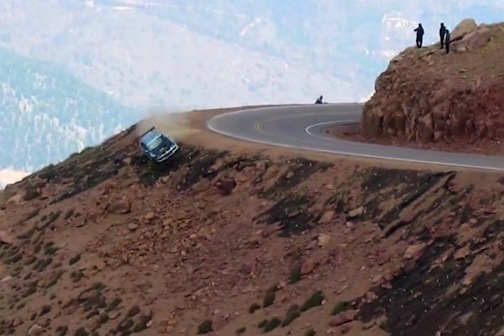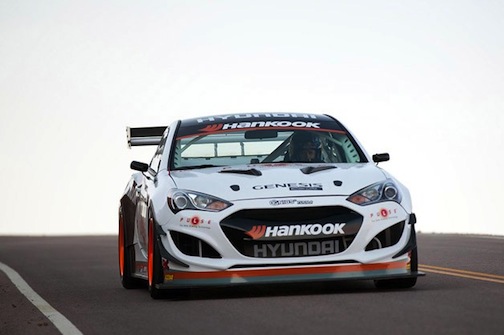Falling Cars, Falling Records and Falling Snow Pikes Peak Hill Climb
Posted on Feb 10, 2019 in Safety | 3 comments

I’ve driven the Pikes Peak hill climb.
Okay, maybe not the Hill Climb, in capital letters, like the one that took place on the Colorado mountain this weekend, but I’ve driven up Pikes Peak for an entirely separate occasion. It took me a good 30 minutes to negotiate the switchbacks, curves, dirt sections of road and harrowing vistas of road ending in sky.
That drive gives me a new appreciation for the brave souls who actually compete in the Pikes Peak Hill Climb, a flat-out timed race to the summit. Compared to my time of a rather leisurely 30-40 minutes, the competitors make the 12.42-mile 156-turn drive in about 10 minutes.
But at least I didn’t fly off a cliff and roll 10 times down the side of the mountain when I made the drive. That, plus falling snow and falling records dominated this year’s Hill Climb.
Hill Climb rookie Jeremy Foley’s Mitsubishi Evolution 8 veered off the pavement near the top of the mountain and rolled at least 10 times in one of the scarier crashes of the day. Thankfully Foley and his co-driver are just fine.
Last year’s winner, Nobuhiro “Monster” Tajima, also had a disappointing race with his new Monster Sport E-Runner in the Electric division. His time behind the wheel ended when a fire took his custom-built race car out of the running early. Last year Monster was the first to ever break the 10-minute mark in the race, but this year the entire course was paved for the first time, which set up plenty of opportunity to take Monster’s record down.
Two drivers did just that.
First, Romain Dumas, a Pikes Peak rookie, sizzled through the course in 9:46.181 in a Porsche 911GT3 R. Then superstar Rhys Millen, driving his 2013 Hyundai Genesis Coupe racer, completed the course in 9:46.164. Yes, the numbers were that close.

Pikes Peak makes a great, though dangerous, race course. Being a mountain and all, the ascent to 14,000 feet and dangerous turns are the least of a driver’s worries. Changing temperatures, falling snow, fallen rocks and an audience allowed to stand as close to the road as they like all contribute to the exhilaration and danger. This year organizers were forced to move the finish line off the summit due to snow and freezing temps.





I think the crashes are inevitable given the terrain and road. I’m surprised there are so many but even with such highly skilled drivers, that’s what happens when you are running on the edge of the envelope.
I’ve personally done many dozens of test runs on Pikes Peak. It was one of our better extreme brake punishment tests and always interesting to reach the bottom with discs running red hot. (and very little braking left.) Definitely much more fun going up than down.
That’s a scary picture! I’m amazed at how safe race cars can be… that just doesn’t look survivable. Jeez. But the risk of it happening is what makes Pikes Peak so appealing to people. I guess if you’re willing to risk it… go for it!
I’ve been involved in setting up quite a few test vehicles with roll cages, and if done right, the cage creates a protective shield that can survive an amazing amount of impact. Race cars are built to an even higher standard, as you can see from the Pike’s Peak footage.